


Home » Sealyham Terrier Terminology: Strong, Powerful, and Balance
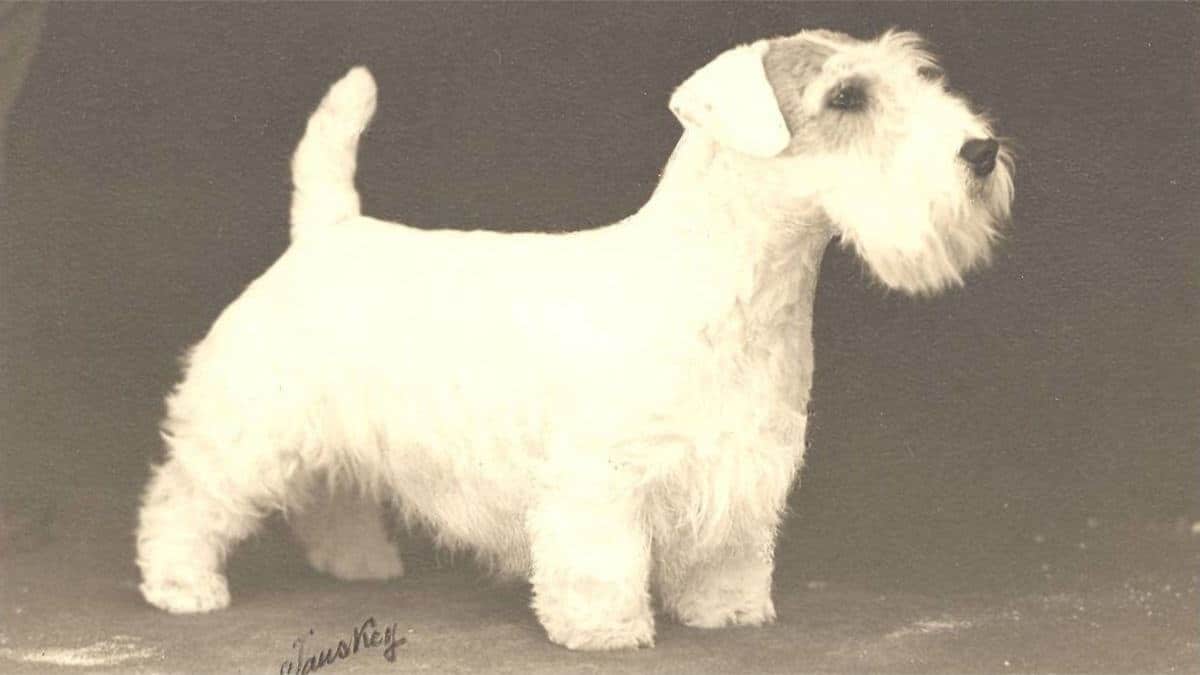
The Sealyham Terrier is a small, white, hearty, purposefully bred working terrier developed by Captain John Edwards in 1848, naming them for his “Sealyham” estate in Wales. Unable to find the ideal short-legged terrier to hunt badgers and otters alongside his Otterhounds, Edwards bred his own, determining they needed a harsh all-weather coat and white color, to be distinguished from the Otterhounds. In his breeding program, Capt. Edwards incorporated a variety of breeds, including Wire Fox Terriers,

West Highland White Terriers, Cheshire Terriers (a breed now extinct but like a small white Bull Terrier), as well as Welsh Corgis to lengthen the back and shorten the length of leg. Sealyham Terriers were first entered at a dog show in 1903, and were officially recognized by both The Kennel Club and AKC in 1911.

The purpose of this article is to explain how the terminology used in the AKC Breed Standard for the Sealyham Terrier relates to the structure and conformation of the breed. As with any Standard, the descriptive terms can be understood differently according to the reader’s knowledge of dogs. It is critical that the terms are explained as they relate specifically to the breed being discussed. For example, the word square is used in several different Breed Standards: Boxer, Chow Chow, and Schipperke, just to name a few.
However, the representation of square is different in each of the breeds, dependent on the measurement. This article will be a resource to further understanding of the Standard as it relates to Sealyhams. The AKC Standard for Sealyhams has not changed since 1974, as the national club wishes to preserve the breed in the form that Captain Edwards had envisioned.
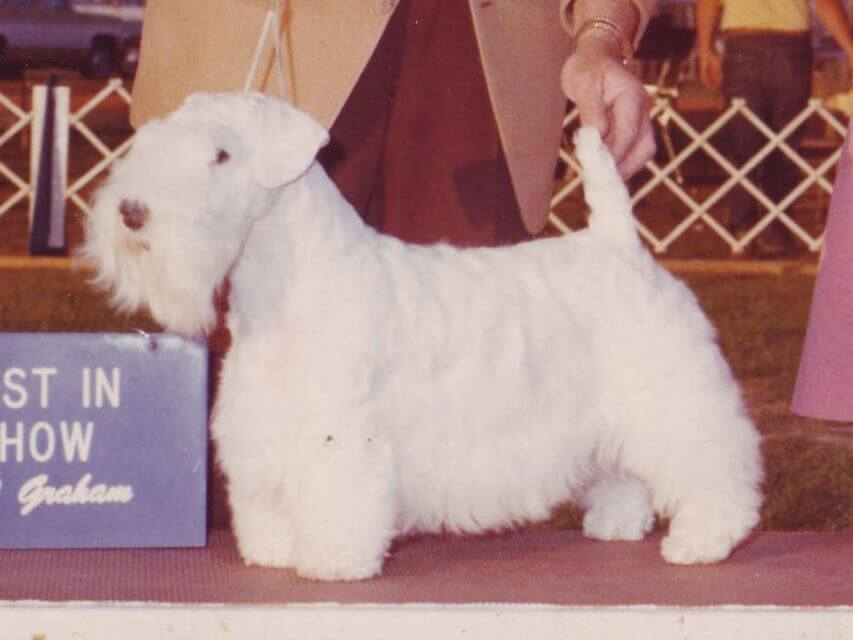
Strength and power are two of the key hallmarks of the Sealyham Terrier. The word “strong” appears six times and the words “power/powerful” appear four times in the Standard. To a non-terrier enthusiast, it might seem unusual to characterize a small white terrier as being strong and powerful. However, we must keep in mind the purpose, as well as the character, of the breed. He is a natural hunter who must be able to defeat prey that is as big or bigger than him. The phrase “of extraordinary substance” should indicate to the dog enthusiast that the Sealyham should have substantial bone, well-sprung rib cage, deep chest, significant muscularity, and a movement that exhibits powerful drive. While Sealyhams are a dwarf breed, their construction is that of a rugged, well-muscled, performance-bred animal. The appearance of strength should not come from being overweight.
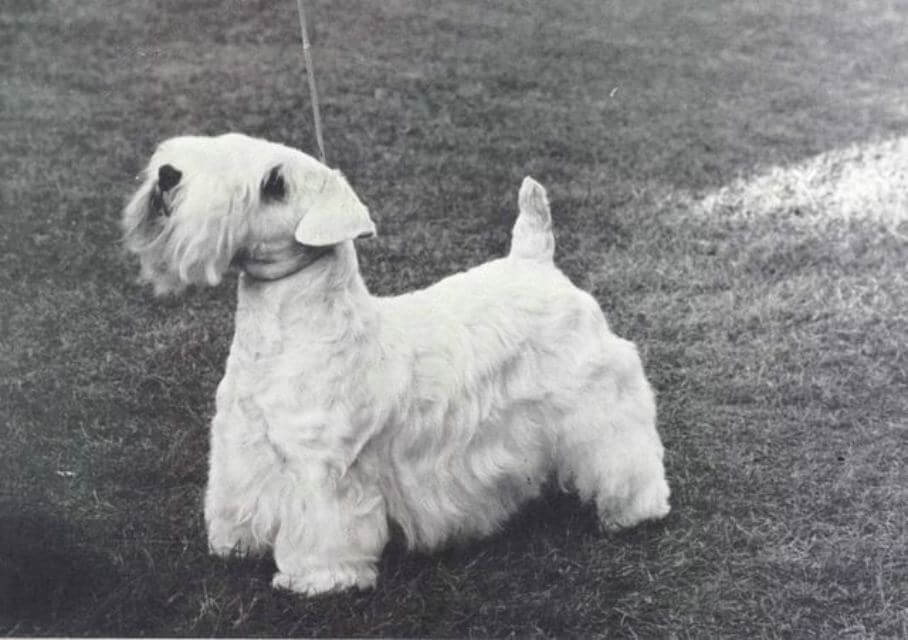
While they are square in body (withers to set-on of tail), their outline should appear rectangular. This is due to the length of head and forechest in front, and the rear beyond the set-on of the tail. A Sealyham should not lean towards being overly refined and elegant; nor cloddy, heavy, and coarse. Sealyhams will exemplify determined, yet free, movement going around the ring. As a short-legged terrier, they should be shown at a natural speed, never excessive or verging on a run. Correct construction will show balanced angles in the shoulder and hindquarters, without an exaggerated, stretched profile. They should exhibit typical extension for a dwarf breed, moving in parallel planes with well-muscled hindquarters.
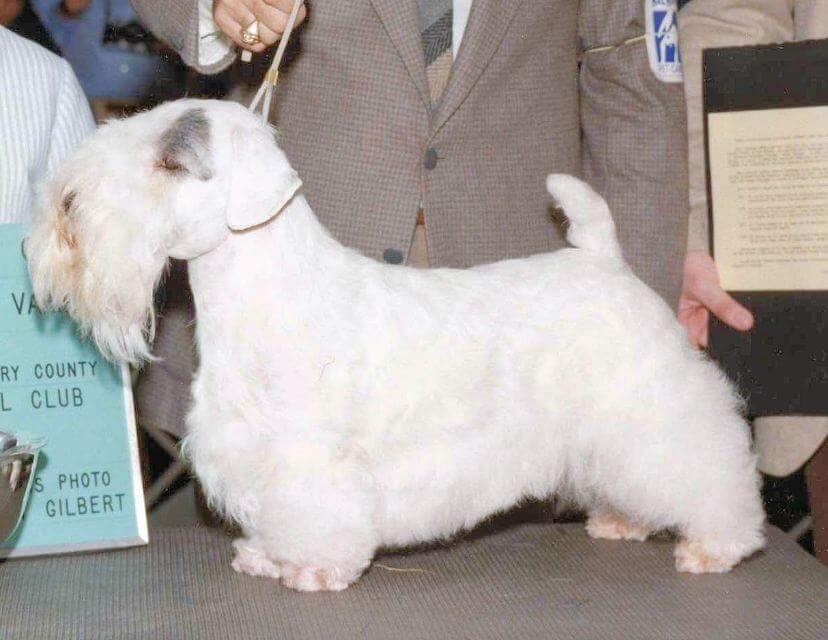
The AKC Standard calls for a dog of 10-1/2 inches at the withers, with bitches slightly less in all ways. This is a bit more limited than the country-of-origin Standard and that used by the FCI, which allows up to 12 inches at the withers. There will be some variation in size due to the limited gene pool for Sealyhams, and there are no DQs for the breed. The specific proportions of the head and the neck length in relation to size should be the greater focus. A key word that must not be overlooked is “balanced.” A correctly constructed Sealyham should be a well-balanced package. As Alva Rosenburg, “The Dean of American Judges” is famed for saying, “We should know what breed it is at midnight, in the dark of the moon, on top of the picket fence.”
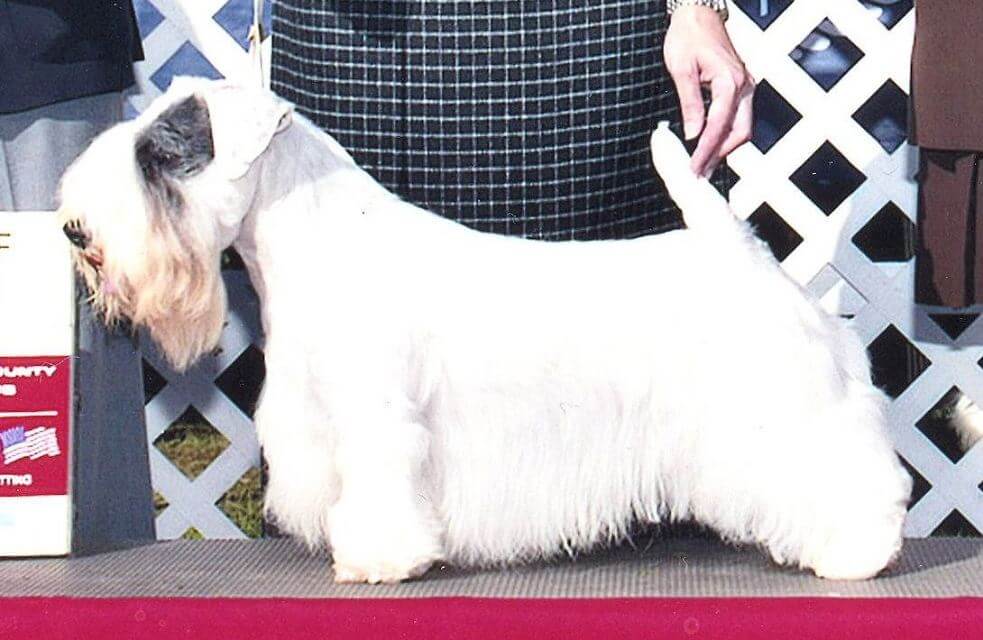
Sealyham Terriers should be all white on their bodies and can have any variation of color on their head and ears. Whereas Sealyhams were once most commonly all-white, markings are commonplace these days. Due to the variety of breeds used to develop the Sealyham, colors range from lightest to darkest shades of brown to near black, and no preference should be given to any color or to any dog strictly on the presence or absence of correct markings. The most frequently seen colors are tan, darker shades of brown, and shades of blue/black. Badger is a mixture of two or more colors, often reddish brown and black hairs, with white hairs occasionally present; the tips of the hairs may appear darker. Heavy ticking (dark hair in the undercoat) or markings anywhere other than the head or ears is undesirable, as stated in the Standard.
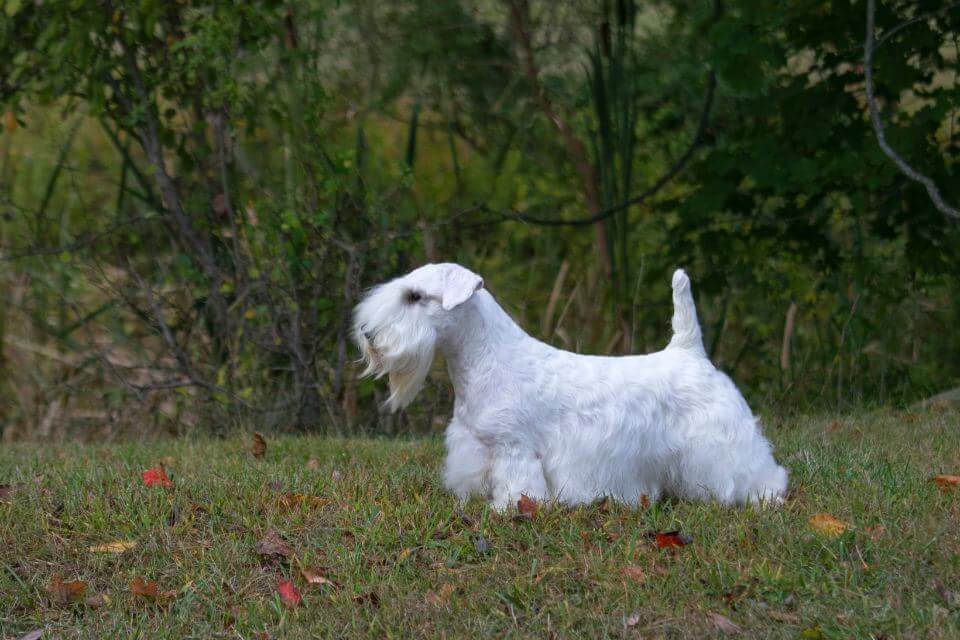
Sealyhams, like many of the other terrier breeds, have seen a decrease in popularity over the past sixty years. I believe that some of this is due to a coat that is hand-stripped, a “softer” lifestyle, where a hearty working terrier is less appreciated, and the accompanied higher drive temperament of the breed. The public no longer understands the value of a “working terrier,” a dog that can dispatch fifty-times more rodents than a cat. We owe the existence of the breed to the dedicated breeders who understand, appreciate, and teach about the virtues of the breed. As with all purposefully bred dogs, we breed to the Breed Standard while focusing on the crucial issues of health and temperament.
